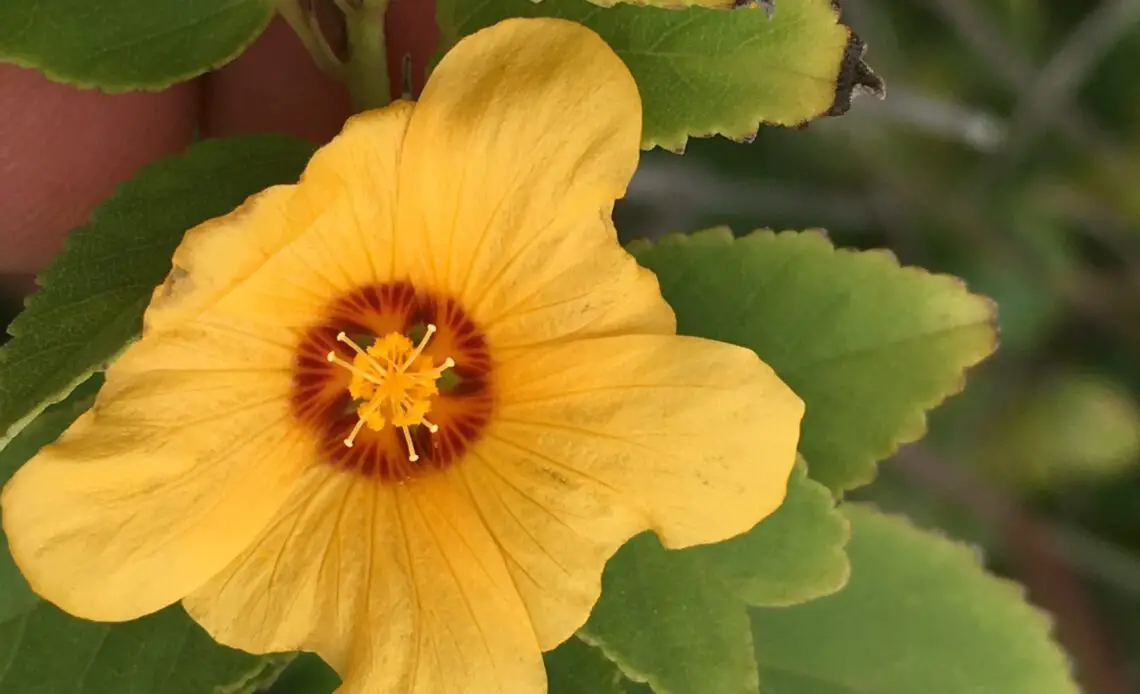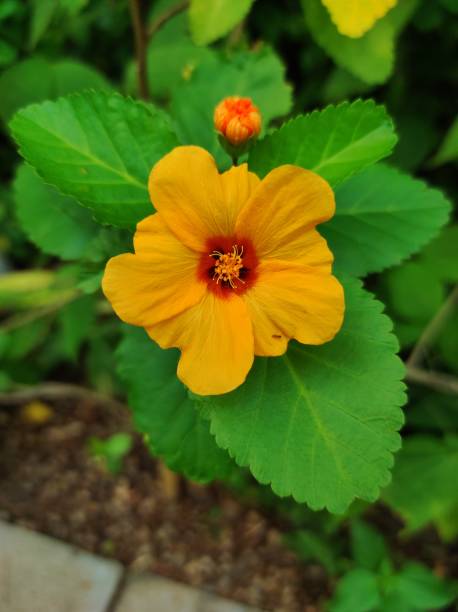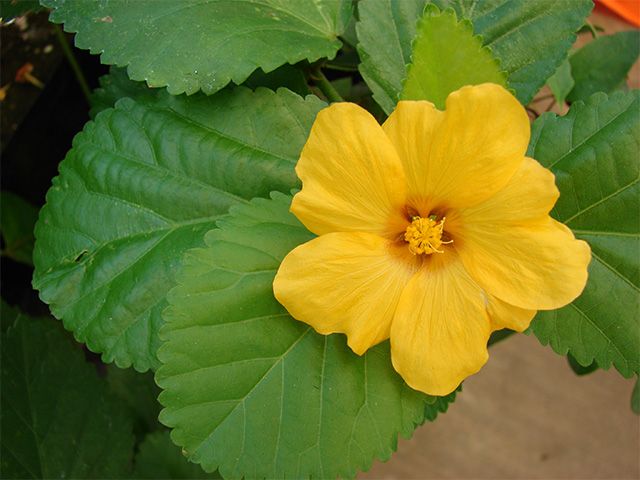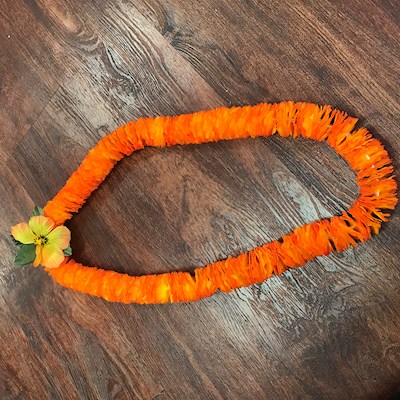
Last updated on May 21st, 2023 at 09:21 am
The ilima flower is a bright yellow flower belonging to the islands of Hawaii. Scientifically called Sida Fallax, it is also known as yellow ilima or golden mallow. It represents a genus or group of plants. Different plants in this group vary widely in their height, size, the shape of a leaf, the size, and color of the flower, etc.
The ilima flower has been a very important part of the culture and history of the Hawaiian people. This plant belongs to the hibiscus family and grows in Hawaii’s hot, dry forests. It grows at a wide range of elevations, from sea level to as high as 6500 feet.
This very hardy plant can grow in various soil types, including coral, cinder, and sand. The leaves are smooth and rounded with pointed ends and can range anywhere between 0.5 to 5 inches. Observed primarily as a shrub, ilima plants are usually under 5 feet, but in some cases, they can grow up to 10 feet.
In prostate forms, often called ‘ilima papa,’ it grows 6 to 12 inches along the coastal areas. The shrub forms grow in moist woodlands. These plants also grow on islands across the Pacific and China.
What does the Ilima flower symbolize?

The ilima flower has a meaning that can be derived from its rich history and nativity to Hawaii. It is the official flower of Oahu island.
Ilima has been the choice of Hawaiians for making lei and medicine since time immemorial. Necklaces were made of as many as 500 or more ilima flowers. These flowers were handpicked and strung together, especially for the Hawaiian royalty. But they would last only a day.
The stems and branches of this plant were also used in the construction of houses and cooking. The use of the ilima flower and its other parts daily symbolizes Hawaii and its culture.
We can also find the meaning of the ilima flower in its physical attributes. Its vivid yellow color stands for beauty and joy. Lei is a very important part of celebrations and giving gifts, so another ilima flower symbol is good luck.
Queen Emma was very fond of ilima flowers, and being signed to the Hawaiian royalty, the meaning of the ilima flower also lies in its reputation for royalty.
All in all, the ilima flower symbolic meanings are:
- good luck
- love
- birth
- spring
- new beginnings
- friendship
- celebration
Meaning of the Ilima flower colors
Yellow color

The striking yellow ilima stands for cheerful spirit and happiness. In many colors across the world, it is considered a symbol of wisdom and courage. This color is highly stimulating, and it promotes energy and enthusiasm.
Yellow as a color is used around the world to spread cheerfulness and encourage communication. The yellow color of the ilima also helps to attract a lot of insects that help with pollination.
Red color

One of the most attractive and enticing colors known, a few varieties of ilima occur in different shades of red. Red is a symbol of love and deep, romantic emotions.
Ilima flowers in red can be a perfect way for a person to express their feelings to someone. This color also signifies strength, power, and aggression, but red always conveys the emotions of love and beauty in flowers.
Orange color

Ilima flowers also come in different shades of orange, sometimes with a mix of red or yellow. Like yellow, orange is a strong and refreshing color. It is commonly seen as a happy and uplifting color in many parts of the world.
Orange is also associated with spirituality, and in Southeast Asia, many religious and spiritual people wear simple, orange clothes.
Interesting facts about the Ilima flowers
- Hawaiian high priests and royalty once only wore ilima flowers. But now, they are grown commercially and worn by everyone.
- Apart from ornamental purposes, ilima flowers have also been traditionally used by Hawaiians for medicinal purposes. They were used for easing pregnancy, helping with asthma, and laxatives for babies.
- In the past, mothers in Hawaii used to feed tender ilima buds to their babies.
- The most important use for ilima for Hawaiians has been for lei-making. This was probably the only non-food-based plant that Hawaiians grew all year around.
- The soft ilima flowers also resemble the beautiful golden feathers of the Hawaiian bird Mamo, which is now extinct.
- Ilimas are evergreen plants. They are bisexual plants, and their flowering season is between June to September.
- Ilima lei was considered to attract evil spirits, signified by its alternative name, ‘apiki.
- Ilima flowers are also associated with Laka, the Hawaiian goddess of Hula and the forest, who could assume ilima flowers at her will.
- Ilima are poor self-pollinators who need to cross-pollinate with other ilima flowers to produce healthy seeds.
- Ilima was the national flower of Hawaii before ma’o hau hele.
How to grow Ilima flowers
Ilima prostrate spreads along the ground and rarely grows taller than 3 to 5 inches. However, the branches can extend rather far, and one plant can easily reach a diameter of 4 feet or more.
- Plant the ilima in dry and non clay soil.
- Place the plant in a spot with full sun to partial shade.
- Use organic mulches to improve the soil over time.
- Apply nitrogen-rich fertilizer (chemical or organic) sparingly.
How to care for Ilima flowers
- Give less water after the ilima shows signs of new growth.
- Fertilize plants once or twice a year with a slow-release balanced fertilizer.
- Prune the plant to encourage new growth, but avoid pruning severely.
Best time to gift Ilima flowers
Being a symbol of good luck, lei made of ilima flowers is the perfect gift for anyone starting a new chapter of life. For example, going to college, a newly married couple, a new job, and so on.
Besides, any occasion is a great opportunity to give ilima flowers or ilima lei. Being a symbol of Hawaii and the fact that they are endemic to the state makes ilima a very special gift.
Conclusion
In ancient Hawaiian society, ilima flowers were highly appreciated. It was one of the few plants the ancient Hawaiians intentionally planted and cultivated. Ilima is known by various names based on the qualities of the plant and where it grows on the island.
Ilima is said to be one of the few non-food species planted by early Hawaiians, and while it was not eaten, it was used in various ways in everyday life. The flowers can be made into lei or utilized as medicine. The stems and branches were employed in the building as slats, floor coverings, and even cooking ways.
If you want to know and learn more about flowers, we at PansyMaiden can help you. Check out our fun, easy-to-read, and informative flower-related content that you will surely enjoy!
